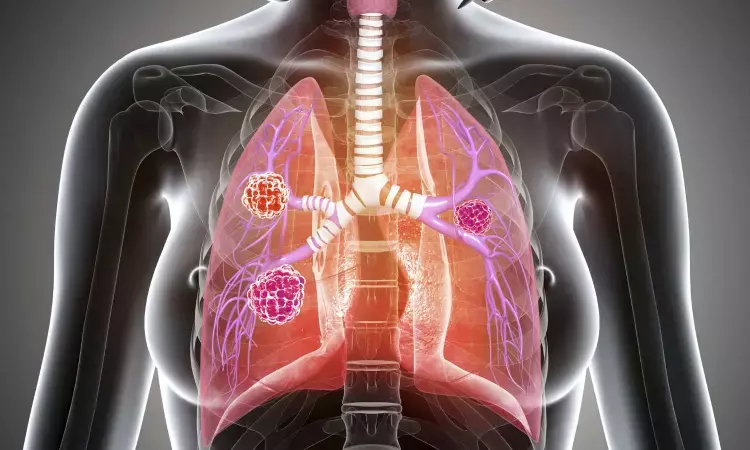- Home
- Medical news & Guidelines
- Anesthesiology
- Cardiology and CTVS
- Critical Care
- Dentistry
- Dermatology
- Diabetes and Endocrinology
- ENT
- Gastroenterology
- Medicine
- Nephrology
- Neurology
- Obstretics-Gynaecology
- Oncology
- Ophthalmology
- Orthopaedics
- Pediatrics-Neonatology
- Psychiatry
- Pulmonology
- Radiology
- Surgery
- Urology
- Laboratory Medicine
- Diet
- Nursing
- Paramedical
- Physiotherapy
- Health news
- Fact Check
- Bone Health Fact Check
- Brain Health Fact Check
- Cancer Related Fact Check
- Child Care Fact Check
- Dental and oral health fact check
- Diabetes and metabolic health fact check
- Diet and Nutrition Fact Check
- Eye and ENT Care Fact Check
- Fitness fact check
- Gut health fact check
- Heart health fact check
- Kidney health fact check
- Medical education fact check
- Men's health fact check
- Respiratory fact check
- Skin and hair care fact check
- Vaccine and Immunization fact check
- Women's health fact check
- AYUSH
- State News
- Andaman and Nicobar Islands
- Andhra Pradesh
- Arunachal Pradesh
- Assam
- Bihar
- Chandigarh
- Chattisgarh
- Dadra and Nagar Haveli
- Daman and Diu
- Delhi
- Goa
- Gujarat
- Haryana
- Himachal Pradesh
- Jammu & Kashmir
- Jharkhand
- Karnataka
- Kerala
- Ladakh
- Lakshadweep
- Madhya Pradesh
- Maharashtra
- Manipur
- Meghalaya
- Mizoram
- Nagaland
- Odisha
- Puducherry
- Punjab
- Rajasthan
- Sikkim
- Tamil Nadu
- Telangana
- Tripura
- Uttar Pradesh
- Uttrakhand
- West Bengal
- Medical Education
- Industry
Ringlike peripheral high iodine concentration can differentiate lung cancer from pulmonary metastases: AJR

Japan: Ringlike peripheral high iodine concentration could help guide management in patients with known cancer and an indeterminate solitary nodule, a recent study in the American Journal of Roentgenology (AJR) has shown.
In the accepted manuscript, the researchers found that ringlike peripheral high iodine concentration showed high specificity (albeit poor sensitivity), an excellent interobserver agreement, for differentiating pulmonary metastasis from primary lung cancer and independently predicted pulmonary metastasis.
In the AJR-accepted manuscript study, Yoshinao Sato, MD, PhD, from the Diagnostic Imaging Center at Japan’s Cancer Institute Hospital in Tokyo, and colleagues, and colleagues aimed to compare the utility of ringlike peripheral increased iodine concentration and conventional findings for differentiating primary lung cancers from pulmonary metastases on dual-energy CT (DECT).
The study included 93 patients (64 men, 29 women; median age, 70 years) who underwent resection of primary lung cancer (n=68) or pulmonary metastasis (n=25) corresponding with a solid lesion on preoperative contrast-enhanced DECT performed between April 2020 and March 2021. After constructing venous-phase 120-keV single-energy images, equilibrium-phase 66-keV virtual monoenergetic images, as well as iodine concentration maps, two radiologists independently assessed lesions for the following: spiculated margins, air bronchograms, rim enhancement, and thin ringlike peripheral high iodine concentration.
Key findings include:
- Interobserver agreement, expressed as kappa, was 0.26 for spiculated margins, 0.60 for air bronchograms, 0.56 for rim enhancement, and 0.80 for ringlike peripheral high iodine concentration.
- Pulmonary metastases, compared with primary lung cancers, showed a significantly higher frequency of ringlike peripheral high iodine concentration (52% vs 19%), but no significant difference in frequency of spiculated margins (49% vs 32%), air bronchograms (36% vs 51%; p=.24), or rim enhancement (4% vs 4%).
- Sensitivity and specificity for diagnosing pulmonary metastasis were 68% and 49% for the absence of spiculated margins; 64% and 51% for the absence of air bronchograms; 4% and 96% for the presence of rim enhancement; and 52% and 81% for the presence of ringlike peripheral high iodine concentration.
Ultimately, ringlike peripheral high iodine concentration on DECT showed excellent interobserver agreement (κ=0.80), and had a sensitivity of 52% and specificity of 81% for differentiating pulmonary metastases from primary lung cancers. Additionally, the finding independently predicted pulmonary metastasis in multivariate analysis [OR=7.81, 95% CI: 2.28–29.60; p=.001], combining patient and lesion characteristics.
“Iodine concentration maps from DECT could help determine the diagnosis for lesions that are equivocal for pulmonary metastasis on conventional images,” the authors of this AJR-accepted manuscript reiterated.
Reference:
Yoshinao Sato, Mitsutomi Ishiyama, Sachiko Nakano, Masayuki Nakao, Mingyon Mun, Hironori Ninomiya, Takashi Terauchi, and Katsunori Oikado, American Journal of Roentgenology: -.10.2214/AJR.22.28654
Dr Kamal Kant Kohli-MBBS, DTCD- a chest specialist with more than 30 years of practice and a flair for writing clinical articles, Dr Kamal Kant Kohli joined Medical Dialogues as a Chief Editor of Medical News. Besides writing articles, as an editor, he proofreads and verifies all the medical content published on Medical Dialogues including those coming from journals, studies,medical conferences,guidelines etc. Email: drkohli@medicaldialogues.in. Contact no. 011-43720751


